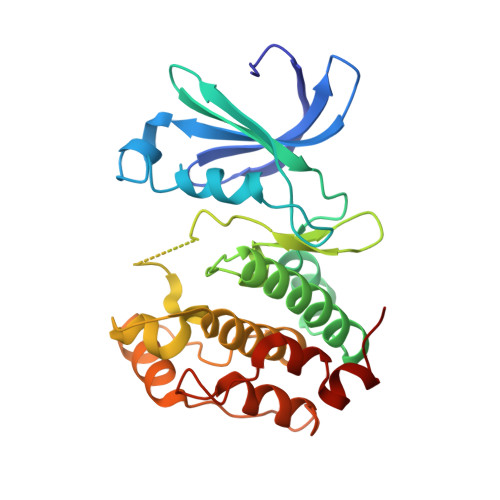Global Reactivity Profiling of the Catalytic Lysine in Human Kinome for Covalent Inhibitor Development.
Tang, G., Wang, W., Zhu, C., Huang, H., Chen, P., Wang, X., Xu, M., Sun, J., Zhang, C.J., Xiao, Q., Gao, L., Zhang, Z.M., Yao, S.Q.(2024) Angew Chem Int Ed Engl 63: e202316394-e202316394
- PubMed: 38248139
- DOI: https://doi.org/10.1002/anie.202316394
- Primary Citation of Related Structures:
8JF3, 8JF4, 8JG8 - PubMed Abstract:
Advances in targeted covalent inhibitors (TCIs) have been made by using lysine-reactive chemistries. Few aminophiles possessing balanced reactivity/stability for the development of cell-active TCIs are however available. We report herein lysine-reactive activity-based probes (ABPs; 2-14) based on the chemistry of aryl fluorosulfates (ArOSO 2 F) capable of global reactivity profiling of the catalytic lysine in human kinome from mammalian cells. We concurrently developed reversible covalent ABPs (15/16) by installing salicylaldehydes (SA) onto a promiscuous kinase-binding scaffold. The stability and amine reactivity of these probes exhibited a broad range of tunability. X-ray crystallography and mass spectrometry (MS) confirmed the successful covalent engagement between ArOSO 2 F on 9 and the catalytic lysine of SRC kinase. Chemoproteomic studies enabled the profiling of >300 endogenous kinases, thus providing a global landscape of ligandable catalytic lysines of the kinome. By further introducing these aminophiles into VX-680 (a noncovalent inhibitor of AURKA kinase), we generated novel lysine-reactive TCIs that exhibited excellent in vitro potency and reasonable cellular activities with prolonged residence time. Our work serves as a general guide for the development of lysine-reactive ArOSO 2 F-based TCIs.
- Department of Chemistry, National University of Singapore, Singapore, 117543, Singapore.
Organizational Affiliation:

















